Certification Symbol Guide
Certification & What Our Symbols Mean
Certification provides reassurance when specifying and installing ironmongery
At Poole Waite & Co Ltd we are committed to quality and reliability. For this reason, when it comes to achieving and maintaining standards, many of the products shown on our website have had independent third-party testing from Warrington Certification Ltd to ensure performance, quality, reliability and traceability of Ironmongery used on fire resisting doors. See below for different classifications and standards.
What Our Symbols Mean:
BS EN 1634-1 Fire resistance tests for door and shutter assemblies.
FD 30 – suitable for 30 minute fire doors.
FD 60 – suitable for 60 minute fire doors.
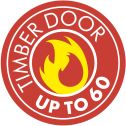
FD 60 – suitable for up to 60 minute timber fire doors.
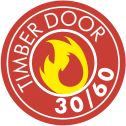
FD 30/60 – suitable for 30 & 60 minute timber fire doors.

FD 30/60/90/120 – suitable for 30, 60, 90 & 120 minute timber fire doors.
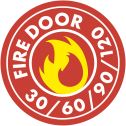
FD 30/60/90/120 – suitable for 30, 60, 90 & 120 minute fire doors.
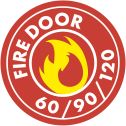
FD 60/90/120 – suitable for 60, 90 & 120 minute fire doors.
FD 30/60 – suitable for 30 & 60 minute fire doors.
FD 120 – suitable for up to 120 minute fire doors.

FD 120 – suitable for up to 120 minute timber fire doors.
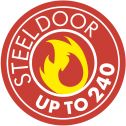
Suitable for steel fire doors up to 240 minute.
BS EN 1906 classifies door furniture (Lever handles and knob furniture) by using a digit coding system.
1 = Medium usage e.g. Internal residential doors
3 = High frequency of use e.g. public building doors
4 = (Maximum Grade) High Frequency use e.g.
Football Stadiums etc.
BS EN 1670 classifies corrosion resistance of door hardware. Using a digit coding system.
0 = No defined corrosion resistance
3 = High resistance minimum for external use
5 = (Maximum Grade) Exceptionally high
corrosion resistance
BS EN 12209 classifies mechanically operated locks, latches and locking plates using a digit coding system.
1 = Low frequency of use
2 = Medium frequency of use
3 = (Maximum Grade) high frequency of use
BS 3621 is the kitemark given to British Standard locks that have met the performance and security testing methods for mortice locks.
BS EN 179 classifies emergency exit devices operated by push pad or lever handle devices. These should be used in low occupancy environments and not by the general public e.g. small offices etc.
BS EN 1125 classifies panic exit devices operated by a horizontal bar. This should be installed in areas used by the general public e.g. shopping centres and hospitals etc.

CE marking is required by the CPR 2011 for products being sold in the EU and indicates the product has been successfully 3rd party conformity assessed by an EU27 Notified Body.

Certifire is an independent third party certification scheme that assures performance, quality, reliability and traceability of fire protection products. Recognised by regulatory authorities worldwide, it is an internationally respected mark of fire safety and one of the most authoritative in the industry.
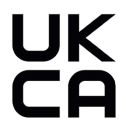
UKCA certification is used for products placed on the market in Great Britain, and means that the product complies with all essential requirements relating to the relevant UK Designated Standard for that product type.
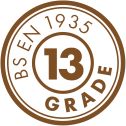
BS EN 1935 classifies door furniture (Single-axis hinges) by using a digit coding system.
Grade 11 = 200,000 test cycles door mass 80kg
Grade 13 = 200,000 test cycles door mass 120kg
Grade 14 = (Maximum Grade) 200,000 test cycles door mass 160kg
BS EN 1303 classifies the standard requirements and testing methods covering cylinders for locks.
Products guaranteed for 10 years against any manufacturing defect.
BS EN 1154 classifies the standard requirements and testing methods covering controlled door closing devices. See page 12 for further information.
BS 8300 is the design of buildings and their approaches to meet the needs of disabled people.
Products suitable for commercial application.


